Kuna aina tofauti za vifaa saidizi vya kutembea, kwa mahitaji tofauti.
Hebu tukutane na watu watatu wanaotumia vifaa saidizi vya kutembea. Kila mtu hutumia aina tofauti ya vifaa saidizi vya kutembea, kwa sababu mahitaji yao ni tofauti.
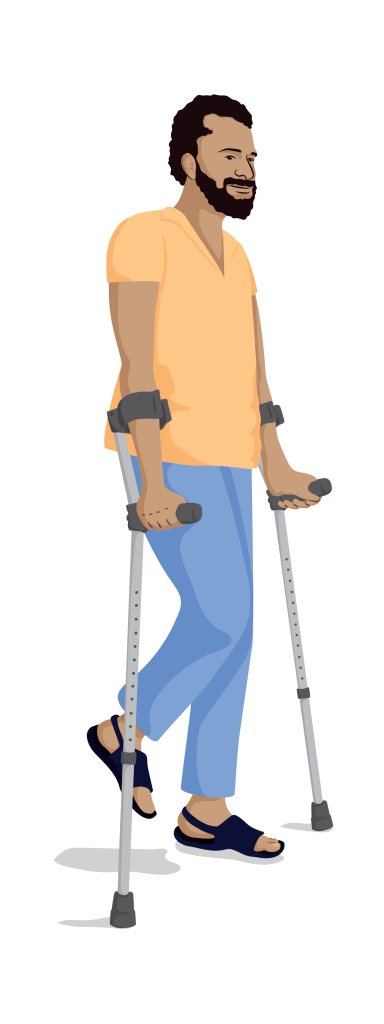
Asif has a below knee prosthetic leg. He uses forearm crutches when tired, or when he is not wearing his leg.

Cali has arthritis. She uses a walking frame. Due to her frailty, poor coordination, pain, she uses a walking frame to help her walk indoors.
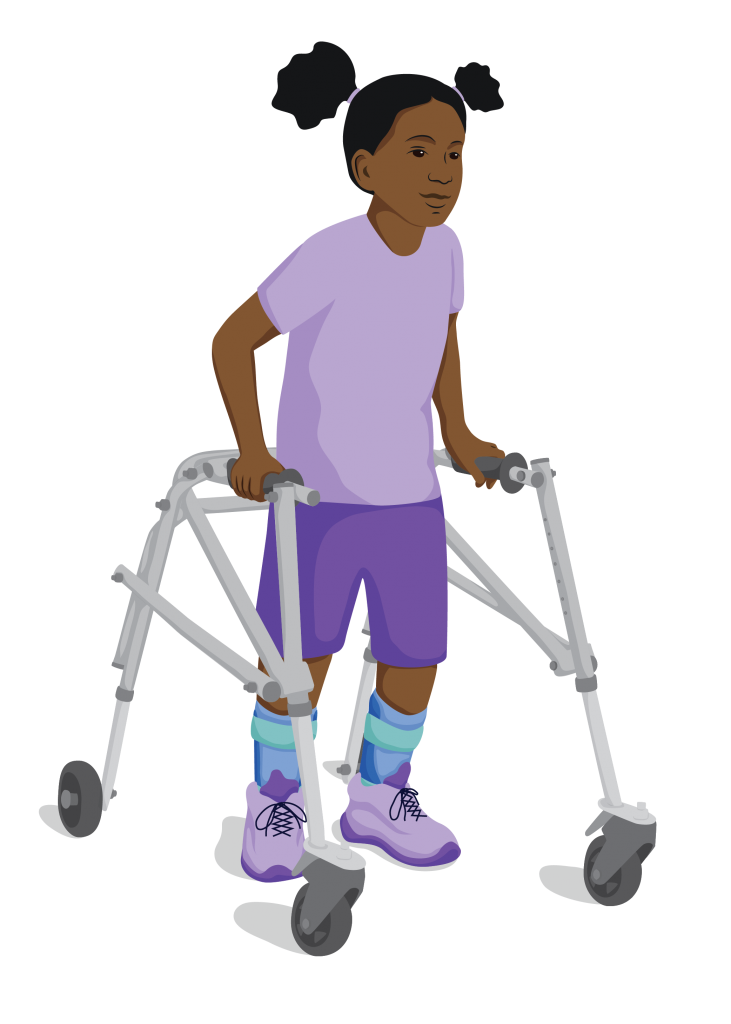
Dinah has cerebral palsy. She uses a posterior walker. She cannot walk without extra support. She needs help with balance and support of her weak leg muscles.
Asif, Cali na Dina kila mmoja hutumia aina tofauti ya vifaa saidizi vya kutembea.
Watu wanahitaji aina sahihi ya vifaa saidizi vya kutembea, kulingana na hali yao ya kimwili, mtindo wa maisha na mazingira.
Kutumia usaidizi usio sahihi wa kutembea kUnaweza kusababisha Matatizo kama vile kuanguka au kuumia.
Soma ili kujua zaidi kuhusu baadhi ya aina za kawaida za vifaa saidizi vya kutembea.
Magongo ya kuteWakati waa Yanayowekwa kwenye kwapa ya mikono
magongo pia Yanaweza kuitwa magongo ya forearm.
Elbow crutches are good for children and adults who:
- Walk using either one or two legs
- Have good upper body strength, coordination and balance

Sehemu za magongo ya kiwiko ni pamoja na (tazama picha iliyoandikwa hapo juu):
- Shaft – a strong tube that forms the main part of the crutch
- Elbow cuff – fixed to the top of the shaft the cuff is shaped to fit around and support the forearm
- Kushika mkono - mshiko wa umbo uliowekwa kwenye shimoni ambao umeundwa kushikwa na kubeba uzito wa mtu.
- Rubber tip – fixed to the bottom of the shaft the tip provides grip between the crutch and the floor
Soma ili kuona kwa nini Asif anachagua kutumia magongo ya kiwiko
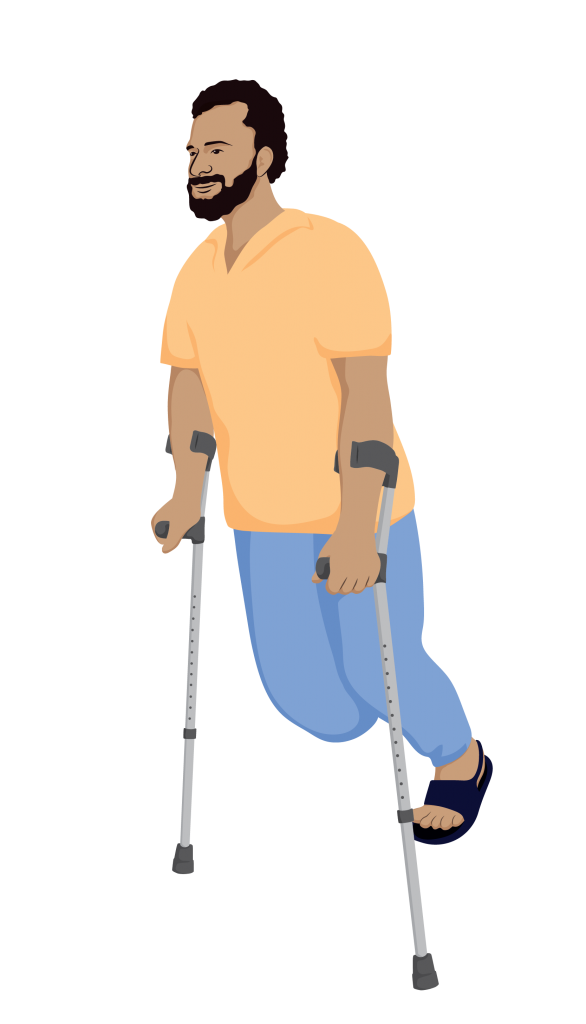 Elbow crutches suit Asif because:
Elbow crutches suit Asif because:
- They are lightweight and easy to take with him wherever he goes
- Anaweza kutumia mikono yake Wakati wa amesimama, bila kulazimika kuweka magongo yake chini
- They work well outdoors and over rough ground
Magongo ya kuteWakati waa aina ya Axilla
Magongo aina ya Axilla pia Yanaweza kuitwa magongo ya chini ya silaha.
Axilla crutches are good for children and adults who:
- Walk using one or two legs
- Need a bit more support than is provided by elbow crutches
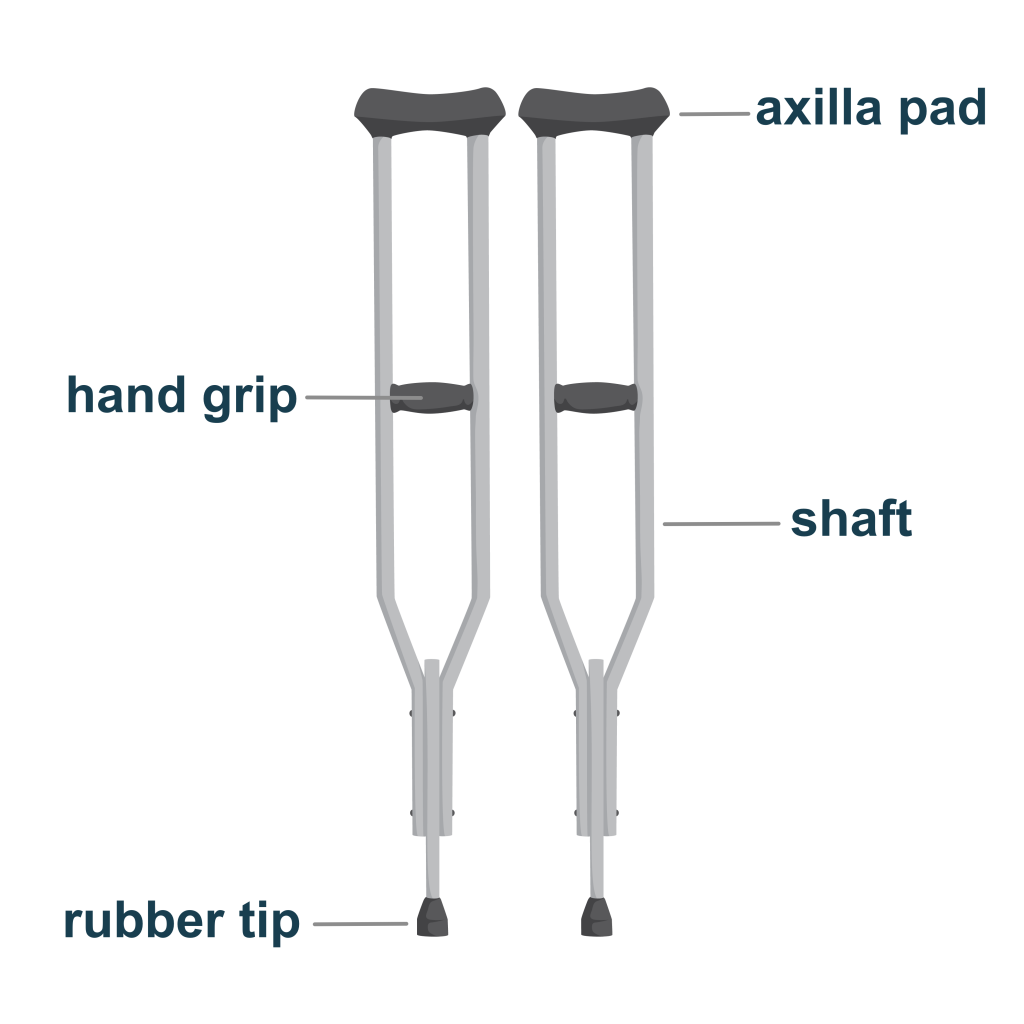
Sehemu za magongo ya kwapa ni pamoja na (tazama picha iliyoandikwa hapo juu):
- Shaft – an adjustable metal frame which supports the other parts of the crutch
- Pedi ya kwapa - tegemeo thabiti, lililosongwa lililowekwa juu ya mkongojo ulioundwa kubeba uzito wa mtu uliowekwa kwenye kwapa.
- Kushika mkono - mshiko wenye umbo utakaoshikiliwa mikononi mwa mtu ili kuruhusu mkongojo kusogezwa.
- Rubber tip – fixed to the bottom of the shaft the tip provides grip between the crutch and the floor
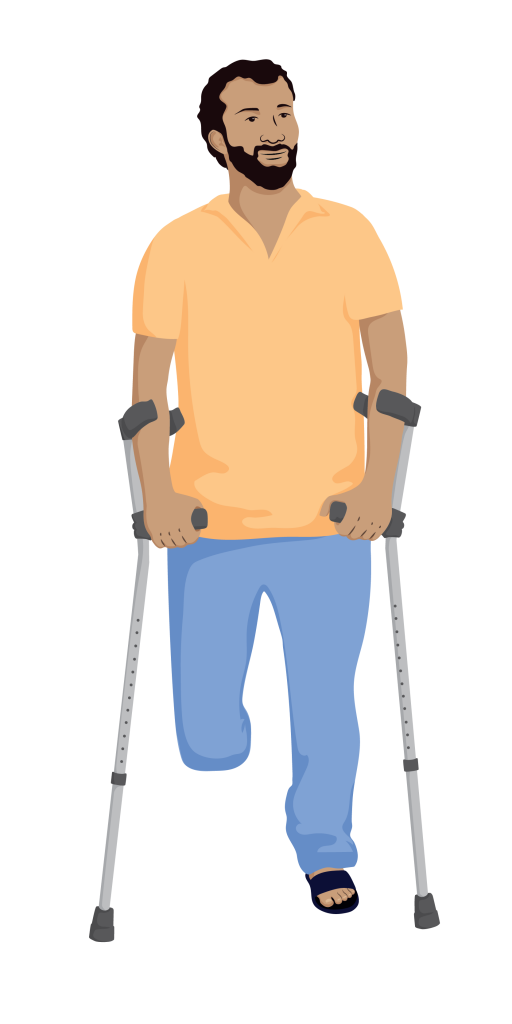
Swali
Je, mikongojo ya kwapa inaweza kuwa chaguo zuri la vifaa saidizi vya kutembea kwa Asif?
Axilla crutches are not as convenient as elbow crutches. They can also cause damage long term because of pressure under the armpits.
fremu ya kutembelea
Fremu za kutembea ni nzuri kwa watu ambao:
- Walk using one or two legs
- Wana Uwezo wa kutumia mikono yote miwili
- Need help to balance
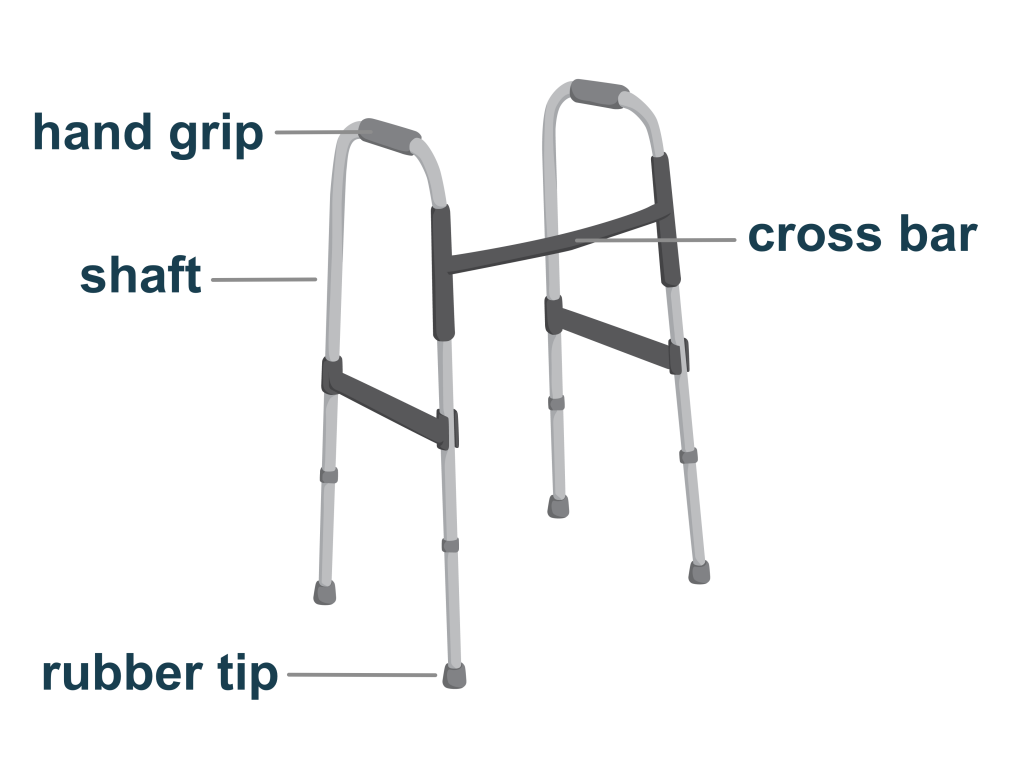
Sehemu za fremu zinazotembea ni pamoja na: ( tazama picha iliyo na lebo hapo juu)
- Shaft – a strong metal structure that forms the main part of the frame
- Kushika mkono - vishikio vya umbo ambavyo mtu hushikilia ili kuhimili uzito wao na pia kusongesha fremu
- Cross bar – a metal bar that links the two halves of the frame
- Rubber tip – fixed to the feet of the frame and provide grip on the floor
Soma ili kuona kwa nini Cali anachagua kutumia fremu ya kutembea

A walking frame suits Cali because it provides her with more support and stability than crutches.
She only uses her walking frame indoors, where the ground is flat. Outdoors the ground is uneven, and the walking frame is not stable.
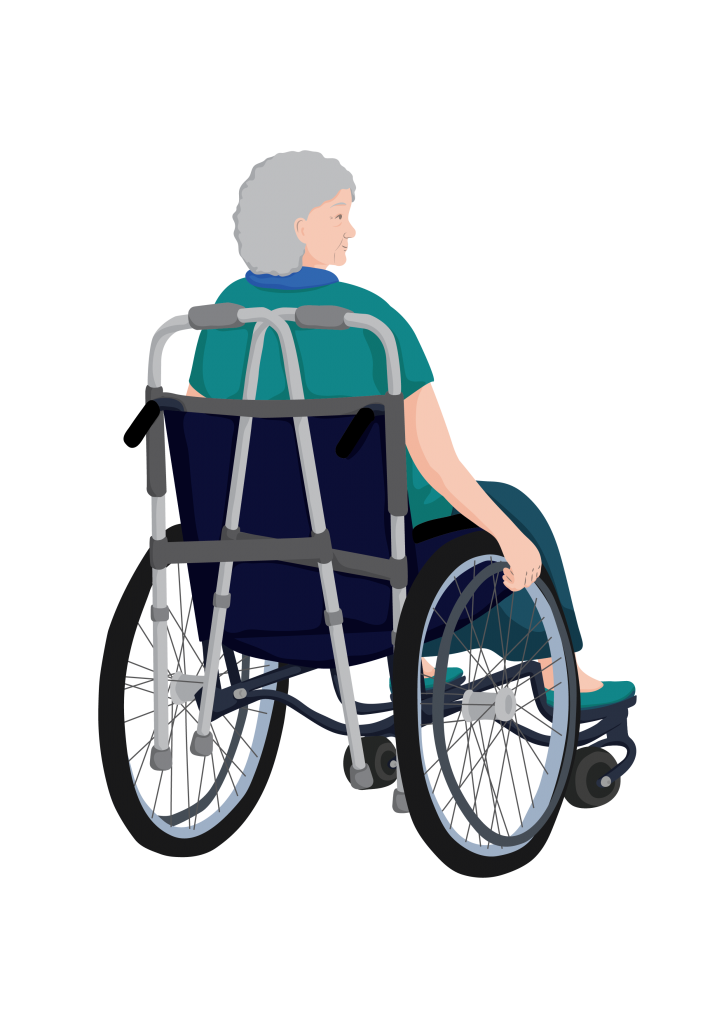
Cali uses a wheelchair outdoors.
Rolata
rolata pia inaweza kuitwa watembeaji wa magurudumu maNne.
rolata ni nzuri kwa watu ambao:
- Walk using two legs
- Wana Uwezo wa kutumia mikono yote miwili na kuwa na mikono yenye nguvu
- Need a small amount of support to walk and have good coordination
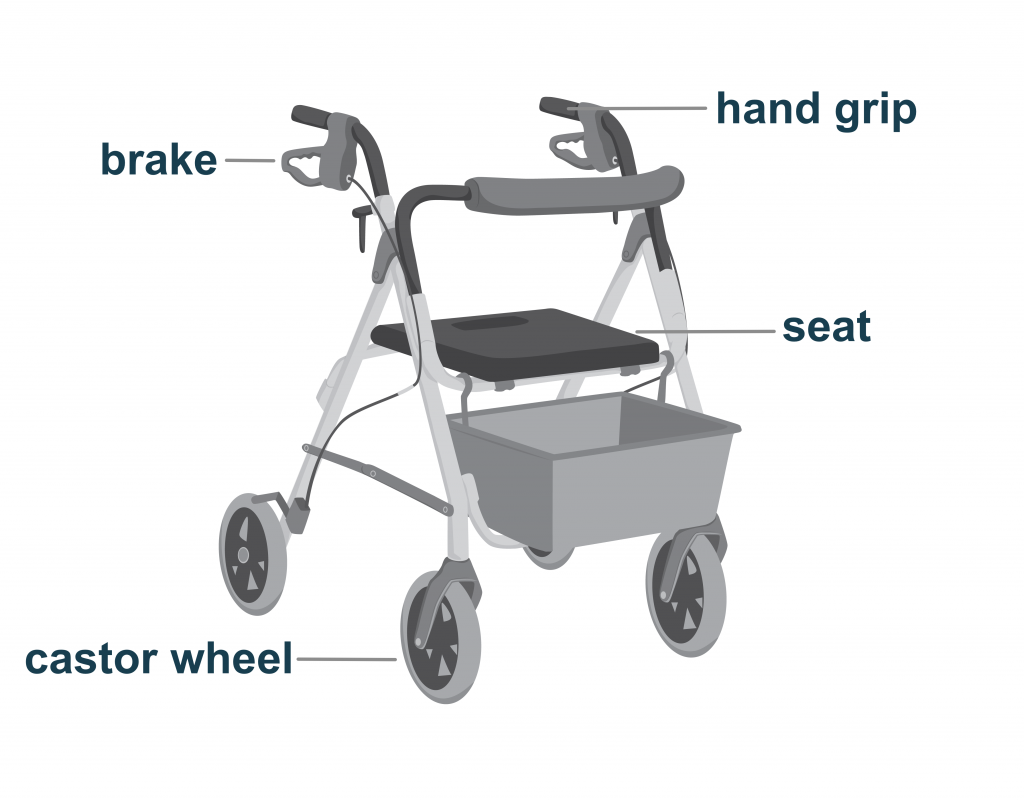
Sehemu za rollator ni pamoja na (tazama picha iliyo na lebo hapo juu):
- Kushika mkono - vishikio vya umbo ambavyo hushikiliwa na mtu ili kubeba uzito wao na pia kusongesha roller
- Breki - breki iliyoamilishwa ya lever ya mkono ambayo inaruhusu mtu kusimamisha rollator
- Kiti - Jukwaa lililounganishwa ambalo mtu anaweza kukaa wakati hatembei
- Castor wheels – wheels on the base of the rollator that allow it to move without being lifted
Swali
Je, Cali pia inaweza kutumia rolata?
Cali tried a rollator, however her hands were not strong enough to use the brakes and she lost control. This made her feel unsafe. She prefers a walking frame.
Posterior walker
Posterior walkers can also be called Kaye walkers.
Posterior walkers are good for children who:
- Walk using two legs
- Can hold the walker with both hands
- Need support to balance
- Can understand how to use the walker
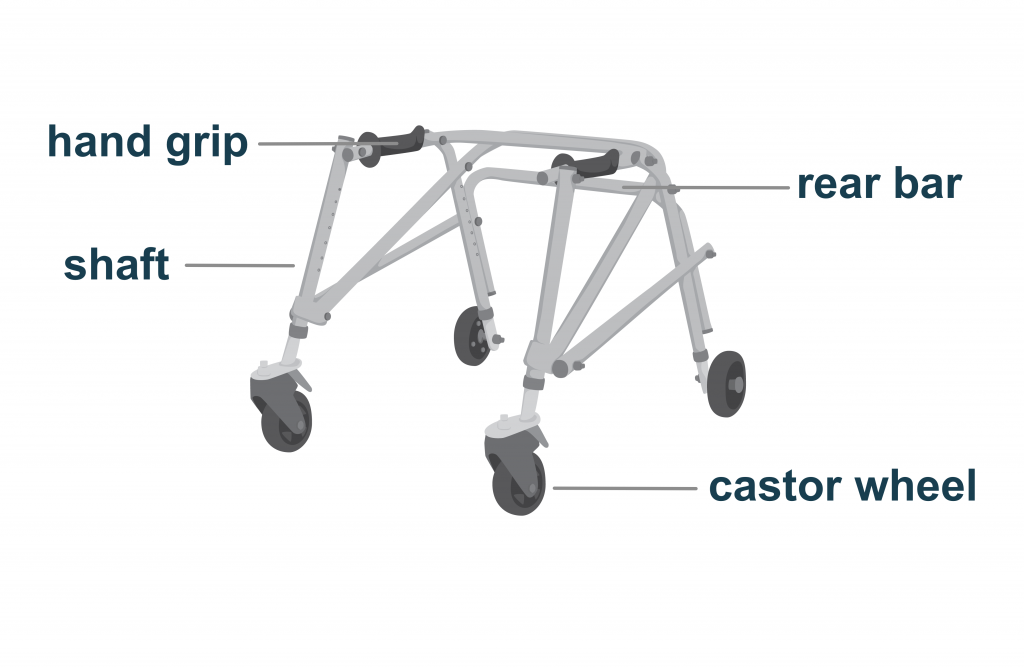
Vitembezi vya nyuma vinajumuisha sehemu zifuatazo (tazama picha iliyo na lebo hapo juu):
- Vishikio vya mikono - vishikio vyenye umbo ambavyo hushikiliwa na mtu ili kubeba uzito wao na pia kusogeza kitembea.
- Baa ya nyuma - bar ya chuma inayounganisha nusu mbili za sura ya kitembezi inayoweza kubadilishwa nyuma ya mtu
- Shaft – an adjustable metal frame that supports the other parts of the walker
- Castor wheels – wheels on the base of the walker that allow it to move without being lifted
Soma ili kuona kwa nini Dina anachagua kutumia kitembezi cha nyuma
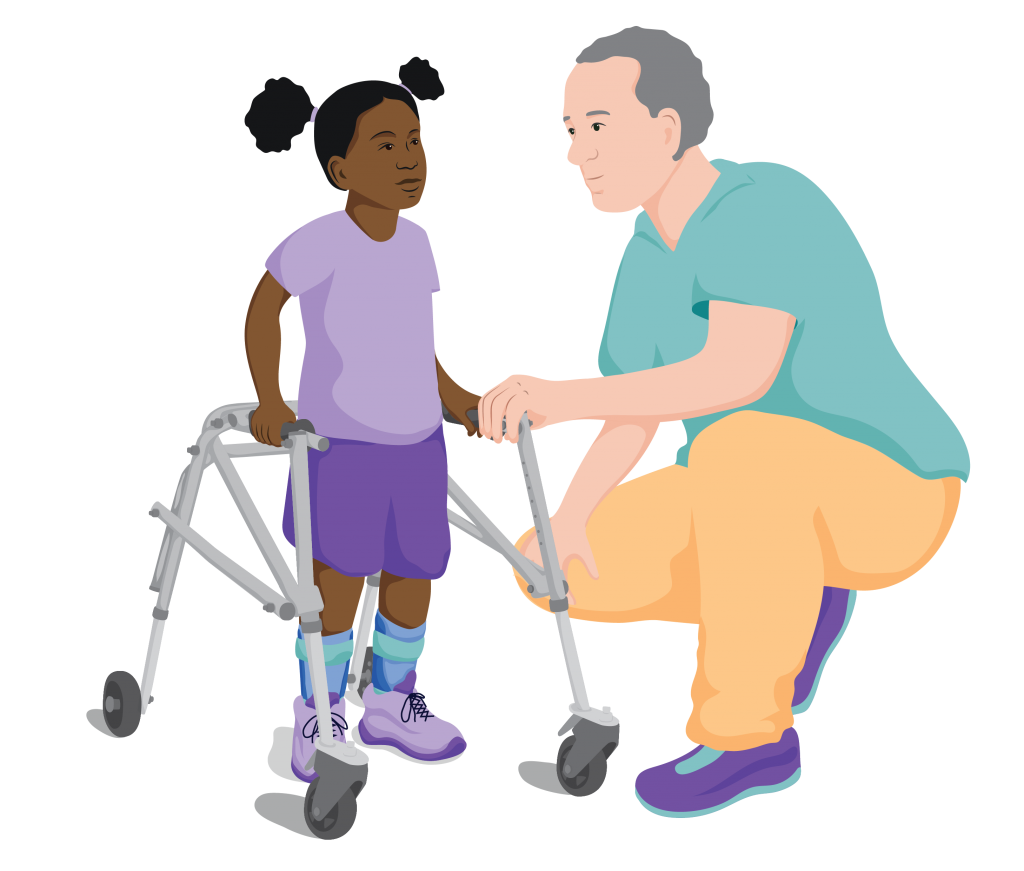
A posterior walker works well for Dinah because it helps her to walk with a natural walking pattern and posture, because the hand grips are close to her side.
Dina alianza kutumia kitembezi chake cha nyuma shuleni. Alikuwa na mazoezi ya mara kwa mara na mfanyakazi wa uRekebishaji aliyefunzwa. Alipokuwa akiitumia vizuri, alianza kuitumia nyumbani na pia shuleni.
Dina hawezi kutumia mtembezi wake kupanda ngazi; na pia huona ugumu wa kutumia nje kwani ardhi haina usawa na mchanga. Ikiwa Dina atakaa kwenye njia zenye nyuso ngumu au za lami, ni sawa.
fimbo ya kuteWakati waa
Fimbo za kutembelea ni nzuri kwa watu ambao:
- Walk using two legs
- Need a small amount of support while walking and have good balance and upper body strength
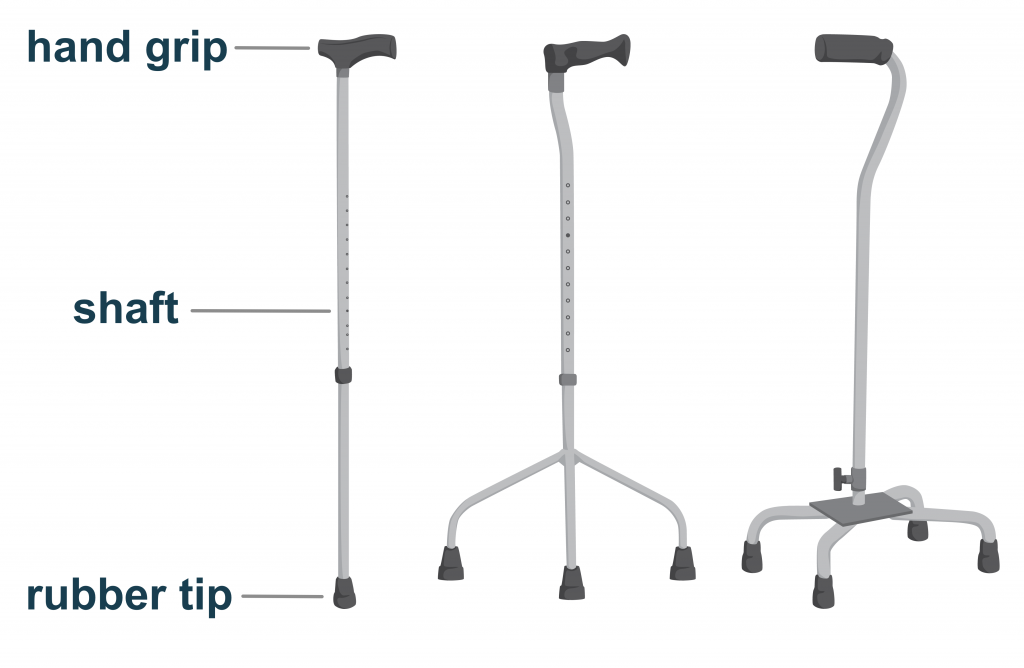
Sehemu za vijiti vya kutembea ni pamoja na (tazama picha iliyo na lebo hapo juu):
- Kushika mkono - mshiko wa umbo unaoshikiliwa na mtu na kutumika kwa kubeba uzito wa sehemu na kusogeza kijiti.
- Shaft – a wooden or metal shaft that may be adjustable in length
- Rubber tip – fixed to the bottom of the shaft (or multiple feet) of the walking stick, the tip provides grip between the stick and the floor